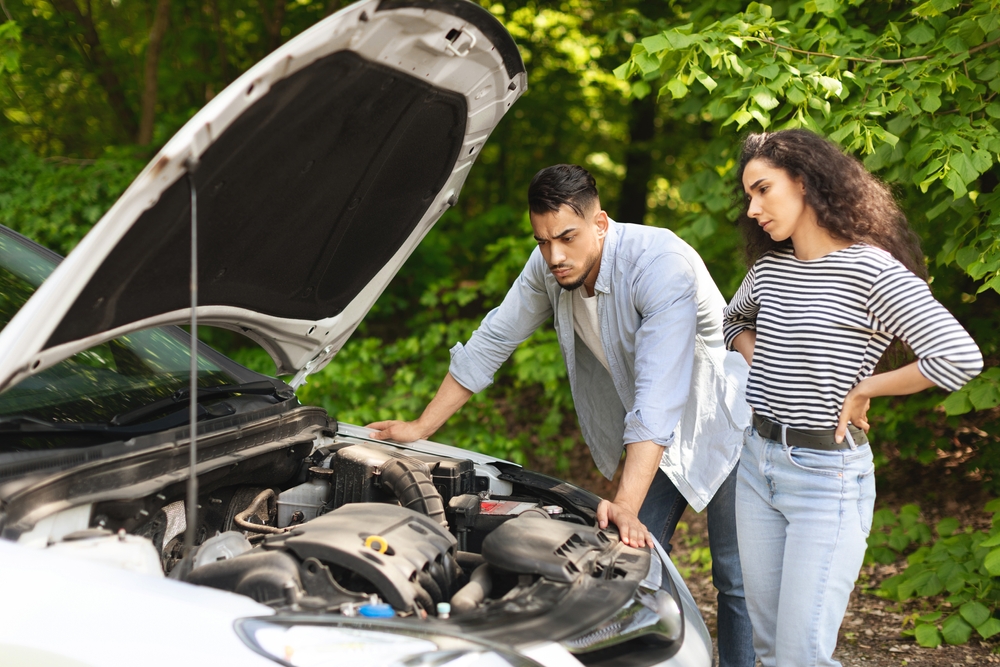
It’s easy to ignore a dashboard warning light, especially when your car seems to drive just fine. But those little icons are more than a minor nuisance—they’re your car’s way of telling you something could be seriously wrong. Many scary car problems start with simple dashboard lights, and ignoring them can lead to expensive repairs or even leave you stranded. Understanding what these lights mean and acting quickly can save you money and keep you safe. Let’s look at ten common warning lights and the big issues they might signal.
1. Check Engine Light
The check engine light is perhaps the most notorious dashboard warning. While it sometimes signals a loose gas cap, it can also indicate scary car problems like a failing catalytic converter or engine misfire. Ignoring this light can lead to decreased fuel efficiency, more significant engine damage, or even a breakdown. If this light comes on and stays on, it’s time to get a diagnostic check as soon as possible.
2. Oil Pressure Warning Light
This warning light looks like an oil can and signals low oil pressure. Low oil pressure can mean your engine isn’t getting the lubrication it needs, which can quickly lead to catastrophic engine failure. If you see this light, stop your car as soon as it’s safe and check your oil level. Running an engine with low oil pressure can destroy it in minutes.
3. Battery Warning Light
The battery symbol on your dashboard doesn’t just mean your battery is weak. It can also point to problems with your alternator or electrical system. If your alternator fails, your car will eventually lose all electrical power, leaving you stranded. If this light comes on while driving, get your charging system checked before you end up stuck with a dead car.
4. Temperature Warning Light
This light, often depicted as a thermometer, means your engine is overheating. Overheating can warp engine components, blow head gaskets, and cause major failure. If you see this light, pull over and let your engine cool before checking coolant levels. Continuing to drive with an overheating engine is a recipe for serious and expensive damage.
5. Brake Warning Light
When the brake warning light pops up, it could be something simple like the parking brake being engaged. But it can also indicate low brake fluid, worn pads, or problems with the brake system. Any issue that affects your ability to stop safely is a scary car problem. Don’t ignore this light—have your brakes inspected right away.
6. ABS Warning Light
The ABS (Anti-lock Braking System) light means there’s a problem with the system that prevents your wheels from locking during hard stops. While your brakes may still work, losing ABS can make it much harder to stop safely in slippery conditions. Addressing this issue quickly can prevent accidents, especially in wet or icy weather.
7. Airbag Warning Light
If the airbag warning light comes on, your car’s airbag system might not work in a crash. That’s a huge safety risk. Faulty sensors, wiring issues, or problems with the airbag module can cause this problem. Don’t take chances—get this checked by a professional as soon as possible to make sure your airbags will deploy when you need them.
8. Tire Pressure Monitoring System (TPMS) Light
This light warns you when your tire pressure is too low or too high. Driving on improperly inflated tires can lead to blowouts or uneven wear, both of which are common, scary car problems. Regularly check your tire pressure, and take this light seriously to avoid dangerous situations and costly tire replacements.
9. Transmission Warning Light
Some vehicles have a specific transmission warning light, while others rely on the check engine light to signal transmission issues. Transmission problems can escalate quickly and are often expensive to fix. If you notice this light along with slipping gears, rough shifting, or strange noises, have your transmission inspected immediately.
10. Power Steering Warning Light
The power steering warning light signals issues with your car’s steering system. Loss of power steering can make your car very difficult to control, especially at low speeds. Sometimes this is caused by low fluid, but it can also mean a failing pump or electrical problem. Don’t risk losing control—get this checked as soon as possible.
Stay Ahead of Scary Car Problems
Dashboard warning lights are your early warning system for scary car problems. Acting quickly when a light comes on can protect your wallet and your safety. Don’t wait for a small issue to turn into a major repair or a dangerous breakdown. If you’re ever unsure what a warning light means, consult your owner’s manual or visit a trusted mechanic.
Regular maintenance is the best way to avoid unexpected repairs. Many drivers find it helpful to use a car maintenance app or keep a log. If you want to learn more about how to keep your car running safely, you might find this dashboard warning lights resource helpful.
Have you ever had a dashboard light turn into a major repair? Share your story or tips in the comments below!
What to Read Next…
- 7 Reasons Your Cars Fuel Injectors Are Triggering Dashboard Lights You Ignore
- 10 Things Your Mechanic Wishes You Knew Before Doing Diy Repairs
- 10 Things You Need To Know Before Buying A Secondhand Porsche
- 9 Car Maintenance Habits That Cause More Harm Than Good
- 8 Car Maintenance Habits That Will Save You Thousands
The post 10 Scary Car Problems That Start With Simple Dashboard Lights appeared first on Clever Dude Personal Finance & Money.







